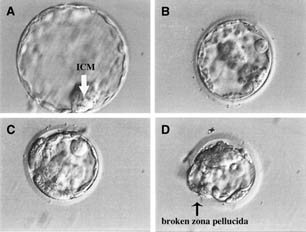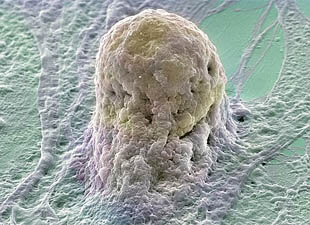
AsianScientist (Aug. 16, 2012) – Thai researchers have shown that even after being frozen for 18 years, human embryos can be thawed, grown in the laboratory, and induced to produce human embryonic stem (ES) cells.
In an article recently published in BioResearch Open Access, Kamthorn Pruksananonda and coauthors from Chulalongkorn University and Chulalongkorn Memorial Hospital, Bangkok, Thailand successfully derived human ES cell lines from blastocysts developed from frozen and fresh embryos.
17- to 18-year-old frozen embryos were thawed, cultured to the blastocyst stage, and induced to form ES cells using human foreskin fibroblasts.
The cell lines derived expressed pluripotent markers, including alkaline phosphatase (AP), Oct3/4, stage-specific embryonic antigen (SSEA)-4, and tumor recognition antigen (TRA)-1-60, and TRA-1-81 as detected with immunocytochemistry.
Real-time polymerase chain reaction (RT-PCR) results showed that the cell lines expressed pluripotent genes, including OCT3/4, SOX2, NANOG, UTF, LIN28, REX1, NODAL, and E-Cadherin. In addition, the telomerase activities of the cell lines were higher than that of the fibroblast cells.
Futhermore, the cell lines differentiated into all three germ layers both in vitro and in vivo. The cell lines had distinct identities, as revealed with DNA fingerprinting, and maintained their normal karyotype after long-term culture.

This study is the first to report the successful derivation of human ES cell lines in Thailand from frozen embryos, and may represent an alternative source of ES cells for drug screening and medical research.
The ES cells maintained their pluripotency similar to fresh embryos, as shown by the success of human ES cell derivation even after years of cryopreservation.
“The importance of this study is that it identifies an alternative source for generating new embryonic stem lines, using embryos that have been in long-term storage,” said Editor-in-Chief Jane Taylor, PhD, MRC Center for Regenerative Medicine, University of Edinburgh, Scotland.
The article can be found at: Pruksananonda et al. (2012) Eighteen-Year Cryopreservation Does Not Negatively Affect the Pluripotency of Human Embryos: Evidence from Embryonic Stem Cell Derivation.
——
Source: Mary Ann Liebert, Inc; Photo: Robert Lanza.
Disclaimer: This article does not necessarily reflect the views of AsianScientist or its staff.












